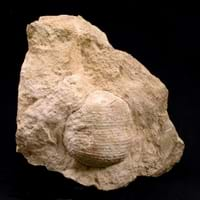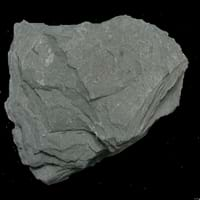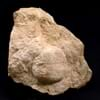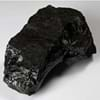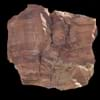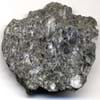Definition
Limestone is a sedimentary rock composed mostly of calcite and aragonite, which are different crystal forms of calcium carbonate
Slate is a fine-grained, foliated, homogeneous metamorphic rock derived from an original shale-type sedimentary rock composed of clay or volcanic ash through low-grade regional metamorphism
Origin
New Zealand
England
Discoverer
Belsazar Hacquet
Unknown
Etymology
From lime and stone in late 14th Century
From Old French esclate, from esclat (French éclat)
Class
Sedimentary Rocks
Metamorphic Rocks
Sub-Class
Durable Rock, Medium Hardness Rock
Durable Rock, Medium Hardness Rock
Group
Not Applicable
Not Applicable
Other Categories
Fine Grained Rock, Opaque Rock
Fine Grained Rock, Opaque Rock
Texture
Clastic or Non-Clastic
Foliated
Color
Beige, Black, Blue, Brown, Cream, Gold, Green, Grey, Light Green, Light Grey, Linen, Pink, Red, Rust, Silver, White, Yellow
Black, Brown, Buff, Green, Light to Dark Grey, Purple, Red, Shades of Blue
Durability
Durable
Durable
Scratch Resistant
Yes
Yes
Appearance
Rough and Banded
Dull
Interior Uses
Decorative Aggregates, Interior Decoration
Bathrooms, Decorative Aggregates, Entryways, Floor Tiles, Flooring, Homes, Hotels, Interior Decoration, Kitchens, Stair Treads
Exterior Uses
As Building Stone, As Facing Stone, Garden Decoration, Office Buildings
As Building Stone, As Facing Stone, Garden Decoration, Paving Stone
Other Architectural Uses
Curbing
Curbing
Construction Industry
Cement Manufacture, Cobblestones, for Road Aggregate, Production of Glass and Ceramics, Raw material for the manufacture of mortar, Roadstone, Source of calcium
As Dimension Stone
Medical Industry
In Chemical and Pharmaceutical Industry, Medicines and Cosmetics
Not Yet Used
Antiquity Uses
Artifacts, Monuments, Sculpture, Small Figurines
Artifacts, Monuments, Sculpture, Small Figurines
Commercial Uses
Animal feed filler, As a Feed Additive for Livestock, Paper Industry, Raw material for manufacture of quicklime, slaked lime, Soil Conditioner, Used in aquariums, Whiting material in toothpaste, paint and paper
Blackboards, Commemorative Tablets, Laboratory bench tops, Standard material for the bed of Billiard table, Standard material for the beds of Pool and Snooker table, Tombstones, Used in aquariums, Writing Slates
Types
Chalk, Coquina, Fossiliferous Limestone, Lithographic Limestone, Oolitic Limestone, Travertine, Tufa
Not Available
Features
Host Rock for Lead, Stalactites and stalagmites are formed from this rock, Zinc and Copper Deposits
Easily splits into thin plates, Surfaces are often shiny, Very fine grained rock
Archaeological Significance
Famous Monuments
Acropolis of Athens in Greece, Agia Sophia in Istanbul, Turkey, Al Aqsa Mosque in Jerusalem, Angkor Wat in Cambodia, Big Ben in London, Charminar in Hyderabad, India, Chhatrapati Shivaji Terminus in Maharashtra, India, Chichen Itza in Mexico, Empire State Building in New York, Khajuraho Temples, India, Kremlin in Moscow, Louvre in Paris, France, Neuschwanstein in Bavaria, Potala Palace in Lahasa, Tibet, Wailing Wall in Jerusalem
Data Not Available
Famous Sculptures
Ajanta Caves in Maharashtra, India, Elephanta Caves in Maharashtra, India
Data Not Available
Formation
Limestone is a sedimentary rock which is mainly made up of calcium carbonate.
Slate is a low grade metamorphic rock that is generally formed by metamorphosis of mudstone or shale, under relatively low pressure and temperature conditions.
Mineral Content
Calcite, Chert, Clay, Dolomite, Quartz, Sand, Silt
Apatite, Biotite, Chlorite, Feldspar, Graphite, Hematite, Kaolinite, Magnetite, Pyrite, Tourmaline, Zircon
Compound Content
Aluminium Oxide, NaCl, CaO, Iron(III) Oxide, FeO, MgO
Aluminium Oxide, CaO, Iron(III) Oxide, Potassium Oxide, MgO, Sodium Oxide, Silicon Dioxide, Titanium Dioxide
Types of Metamorphism
Not Applicable
Burial Metamorphism, Cataclastic Metamorphism, Regional Metamorphism
Types of Weathering
Biological Weathering, Chemical Weathering, Mechanical Weathering
Biological Weathering, Chemical Weathering, Mechanical Weathering
Types of Erosion
Chemical Erosion, Coastal Erosion
Coastal Erosion, Glacier Erosion, Water Erosion, Wind Erosion
Grain Size
Fine Grained
Very fine-grained
Fracture
Splintery
Splintery
Streak
White
Light to dark brown
Porosity
Less Porous
Less Porous
Luster
Dull to Pearly
Dull
Cleavage
Non-Existent
Slaty
Specific Gravity
2.3-2.7
2.65-2.8
Transparency
Opaque
Opaque
Density
2.3-2.7 g/cm3
2.6-2.8 g/cm3
Resistance
Pressure Resistant
Heat Resistant, Impact Resistant, Pressure Resistant, Wear Resistant
Deposits in Eastern Continents
Asia
Brunei, India, Indonesia, Malaysia, Singapore, Thailand, Vietnam
China, India, Turkey
Africa
Cameroon, Chad, Ghana, Kenya, Malawi, Sudan, Tanzania, Togo, Zambia, Zimbabwe
Not Yet Found
Europe
United Kingdom
Belgium, France, Germany, Italy, Norway, Portugal, Spain, United Kingdom
Others
Not Yet Found
Arctic
Deposits in Western Continents
South America
Colombia
Brazil
Deposits in Oceania Continent
Australia
Adelaide, New Zealand, Queensland, Tonga, Victoria, Yorke Peninsula
Not Yet Found
All about Limestone and Slate Properties
Know all about Limestone and Slate properties here. All properties of rocks are important as they define the type of rock and its application. Limestone belongs to Sedimentary Rocks while Slate belongs to Metamorphic Rocks.Texture of Limestone is Clastic or Non-Clastic whereas that of Slate is Foliated. Limestone appears Rough and Banded and Slate appears Dull. The luster of Limestone is dull to pearly while that of Slate is dull. Limestone is available in beige, black, blue, brown, cream, gold, green, grey, light green, light grey, linen, pink, red, rust, silver, white, yellow colors whereas Slate is available in black, brown, buff, green, light to dark grey, purple, red, shades of blue colors. The commercial uses of Limestone are animal feed filler, as a feed additive for livestock, paper industry, raw material for manufacture of quicklime, slaked lime, soil conditioner, used in aquariums, whiting material in toothpaste, paint and paper and that of Slate are blackboards, commemorative tablets, laboratory bench tops, standard material for the bed of billiard table, standard material for the beds of pool and snooker table, tombstones, used in aquariums, writing slates.
